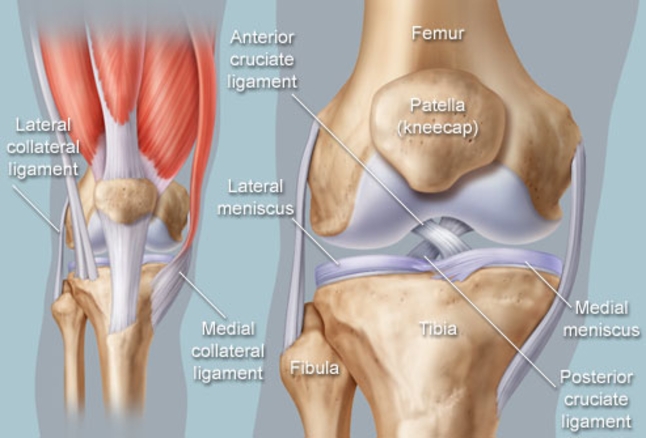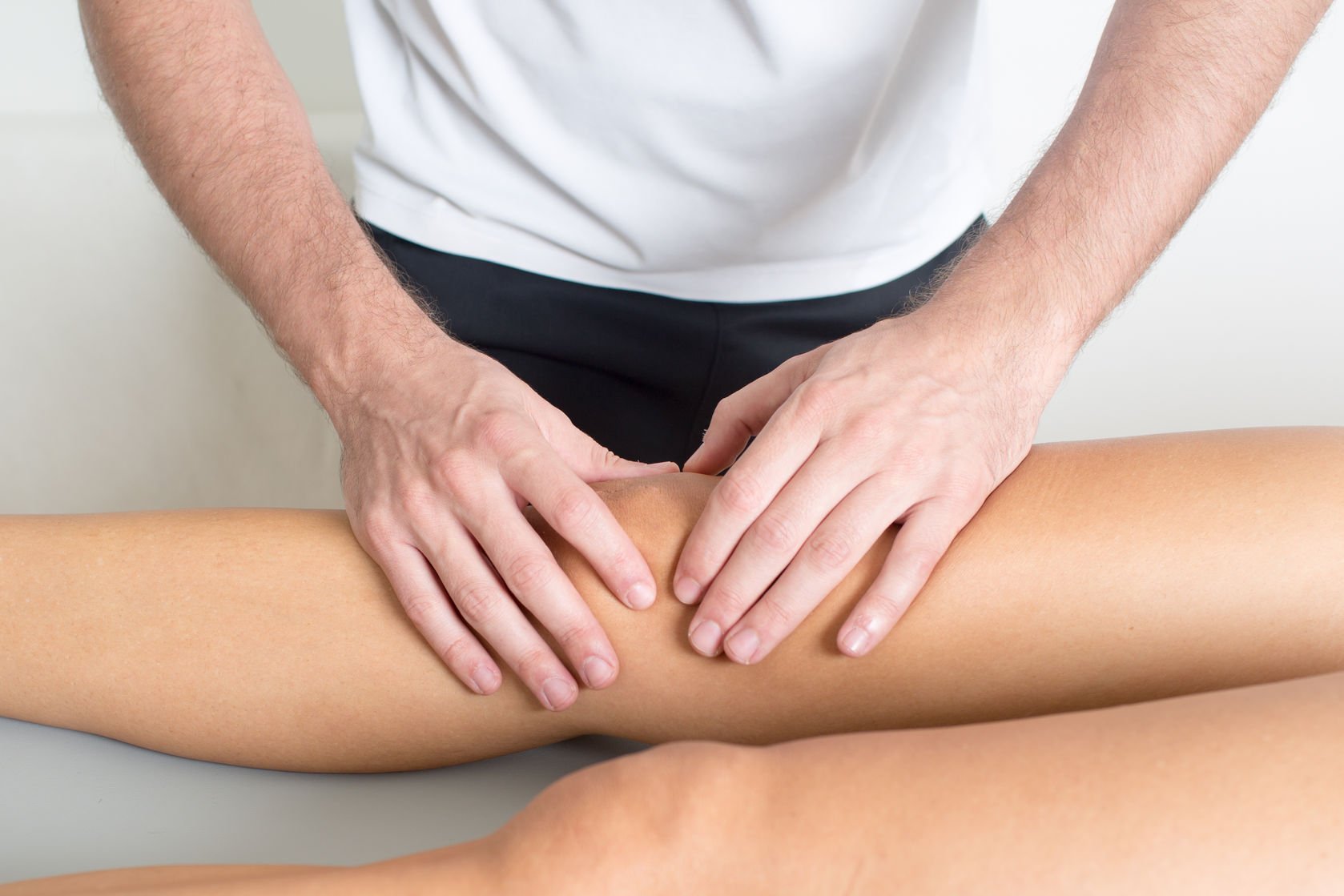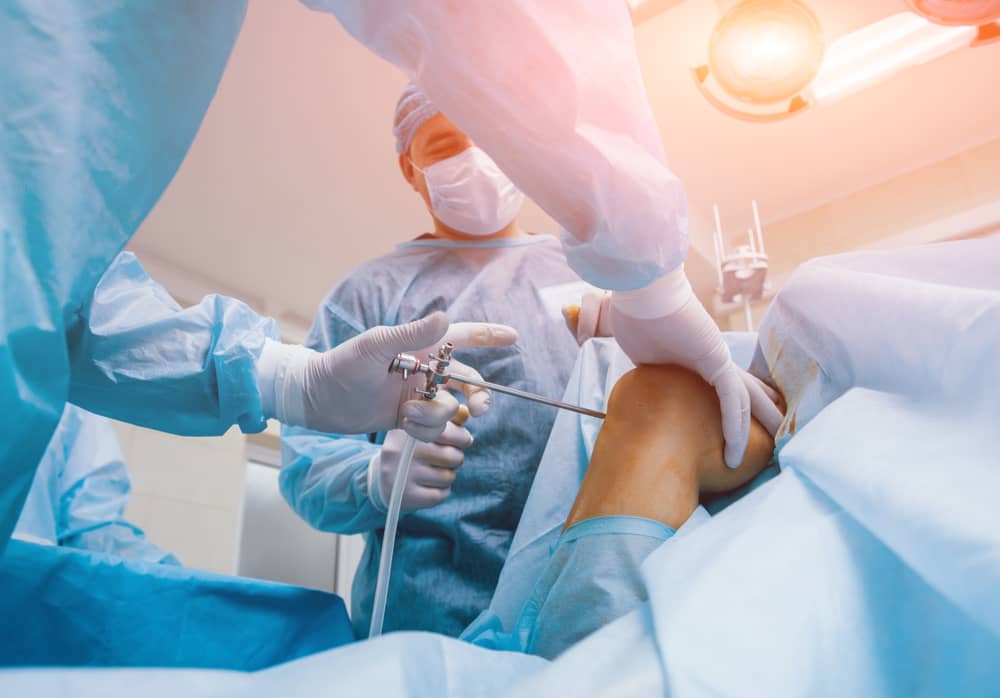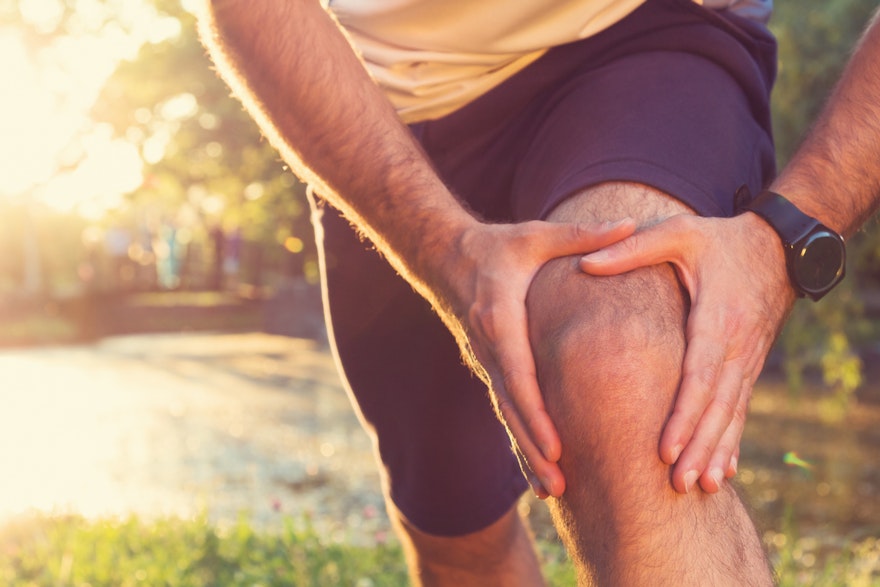Arthritis is inflammation of one or more of your joints. Pain, swelling, and stiffness are the primary symptoms of arthritis. Any joint in the body may be affected by the disease, but it is particularly common in the knee.
Knee arthritis can make everyday activities, such as walking or climbing stairs difficult. It can seriously hamper sports activities. It is a major cause of lost work time and a serious disability for many people.
The most common types of arthritis are osteoarthritis and rheumatoid arthritis.
Although there is no permanent cure for arthritis, there are many treatment options available to help manage pain and keep people staying active.
Anatomy
The knee is the largest and strongest joint in your body. It is made up of the lower end of the femur (thighbone), the upper end of the tibia (shinbone), and the patella (kneecap). The ends of the three bones where they touch are covered with articular cartilage, a smooth surface that protects and cushions the bones as you bend and straighten your knee.
Two wedge-shaped pieces of cartilage called meniscus act as “shock absorbers” between your thighbone and shinbone. They are tough and rubbery to help cushion the joint and keep it stable.

The knee joint is surrounded by a thin lining called the synovial membrane. This membrane releases a fluid that lubricates the cartilage and reduces friction.
Types of arthritis
The major types of arthritis that affect the knee are osteoarthritis, rheumatoid arthritis, and posttraumatic arthritis.
1. Osteoarthritis
Osteoarthritis is the most common form of arthritis in the knee. It is a degenerative,”wear-and-tear” type of arthritis that occurs most often in people 50 years of age and older, but may occur in younger people, too.
With more and more people engaging in sports activities and rise in incidence of obesity, it is increasingly common to see arthritis in younger population.
In osteoarthritis, the cartilage in the knee joint gradually wears away. As the cartilage wears away, it becomes frayed and rough, and the protective space between the bones decreases. This can result in bone rubbing on bone, causing painful and stiff joints.
Osteoarthritis develops slowly and the pain it causes worsens over time.
2. Rheumatoid Arthritis
Rheumatoid arthritis is a chronic disease that attacks multiple joints throughout the body, including the knee joint. It is symmetrical, meaning that it usually affects the same joint on both sides of the body.
In rheumatoid arthritis the synovial membrane that covers the knee joint begins to swell, This results in knee pain and stiffness.
Rheumatoid arthritis is an autoimmune disease. This means that the immune system attacks its own tissues. The immune system damages normal tissue (such as cartilage and ligaments) and softens the bone.
3. Posttraumatic Arthritis
Posttraumatic arthritis is form of arthritis that develops after an injury to the knee. For example, a broken bone may damage the joint surface and lead to arthritis years after the injury. Meniscal tears and ligament injuries can cause instability and additional wear on the knee joint, which over time can result in arthritis.
Symptoms
A knee joint affected by arthritis may be painful and inflamed. Generally, the pain develops gradually over time, although sudden onset is also possible. There are other symptoms, as well:
- The joint may become stiff and swollen, making it difficult to bend and straighten the knee.
- Pain and swelling may be worse in the morning, or after sitting or resting.
- Vigorous activity may cause pain to flare up.
- Loose fragments of cartilage and other tissue can interfere with the smooth motion of joints. The knee may “lock” or “stick” during movement. It may creak, click, snap or make a grinding noise (crepitus).
- Pain may cause a feeling of weakness or buckling in the knee.
- Many people with arthritis note increased joint pain with rainy or cold weather.
Physical Examination

It can show following:
- Joint swelling, warmth, or redness
- Tenderness about the knee
- Restricted movements of the joint
- Crepitus (a grating sensation inside the joint)
- Painful gait
- Involvement of other joints (an indication of rheumatoid arthritis)
Imaging Tests
X-rays: They can help distinguish among various forms of arthritis. X-rays of an arthritic knee may show a narrowing of the joint space, changes in the bone and the formation of bone spurs (osteophytes).
Other tests: Occasionally, a magnetic resonance imaging (MRI) scan is to determine exact extent of arthritis
Laboratory Tests
Blood tests to determine which type of arthritis you have. With some types of arthritis, including rheumatoid arthritis, gout, blood tests will help with a proper diagnosis.
Treatment
There is no cure for arthritis but there are a number of treatments that may help relieve the pain and disability it can cause.
Nonsurgical Treatment
As with other arthritic conditions, initial treatment of arthritis of the knee is nonsurgical. Your doctor may recommend a range of treatment options.
Lifestyle modifications
- Minimize activities that aggravate the condition, such as climbing stairs.
- Switching from high impact activities (like jogging or tennis) to lower impact activities (like swimming or cycling) will put less stress on your knee.
- Losing weight can reduce stress on the knee joint, resulting in less pain and increased function.
Physical therapy
Specific exercises can help increase range of motion and flexibility, as well as help strengthen the muscles in your leg. Your doctor or a physical therapist can help develop an individualized exercise program that meets your needs and lifestyle.
Assistive devices
Using devices such as a cane, wearing shock-absorbing shoes or inserts, or wearing a brace or knee sleeve can be helpful. A brace assists with stability and function, and may be especially helpful if the arthritis is centered on one side of the knee. There are two types of braces that are often used for knee arthritis: An “unloader” brace shifts weight away from the affected portion of the knee, while a “support” brace helps support the entire knee load.
Medications and/or other remedies
Applying heat or ice, using pain-relieving ointments or creams, or wearing elastic bandages to provide support to the knee may provide some relief from pain.
Several types of drugs are useful in treating arthritis of the knee. Because people respond differently to medications, your doctor will work closely with you to determine the medications and dosages that are safe and effective for you.
- Anti-inflammatory and analgesic medicines: they relieve pain but do not change course of degeneration. Taking them for long time can cause side effects like ulcers and kidney failure.It can also affect heart function. They should not be taken without doctor’s advice.
- Corticosteroids: (also known as cortisone) are powerful anti-inflammatory agents that can be injected into the joint These injections provide pain relief and reduce inflammation; however, the effects do not last indefinitely. Again frequent use can cause adverse effects on cartilage. It can enhance joint damage.
- Disease-modifying anti-rheumatic drugs (DMARDs): are used to slow the progression of rheumatoid arthritis. Drugs like methotrexate, sulfasalazine, and hydroxychloroquine are commonly prescribed.
- Vissco supplement Injection: It involves injecting substances into the joint to improve the quality of the joint fluid. They can give long term relief without much side effects. Combined with proper Physio, weight reduction the cartilage degeneration can be effectively postponed in selected early stage cases.
- Glucosamine and chondroitin sulfate: Substances found naturally in joint cartilage, can be taken as dietary supplements. Although patient reports indicate that these supplements may relieve pain, there is no evidence to support the use of glucosamine and chondroitin sulfate to decrease or reverse the progression of arthritis.
Alternative therapies.
Many alternative forms of therapy are unproven, but may be helpful to try, provided you find a qualified practitioner and keep your doctor informed of your decision. Alternative therapies to treat pain include the use of acupuncture and magnetic pulse therapy.
Surgical Treatment

Your doctor may recommend surgery if your pain from arthritis causes disability and is not relieved with nonsurgical treatment. As with all surgeries, there are some risks and possible complications with different knee procedures. Your doctor will discuss the possible complications with you before your operation.
Arthroscopy
During arthroscopy, doctors use small incisions and thin instruments to diagnose and treat joint problems.
Arthroscopic surgery is not often used to treat arthritis of the knee. In cases where osteoarthritis is accompanied by a degenerative meniscal tear, arthroscopic surgery may be recommended to treat the torn meniscus. Also when pain is due to loose bodies or inflamed synovium, arthroscopy can be of help. However , in advanced stage it doesn’t offer much help.
Cartilage grafting
Normal, healthy cartilage tissue may be taken from another part of the knee or from a tissue bank to fill a hole in the articular cartilage. This procedure is typically considered only for younger patients who have small areas of cartilage damage.
Arthroscopic Synovectomy
The joint lining damaged by rheumatoid arthritis is removed to reduce pain and swelling.
High tibial Osteotomy
In a knee osteotomy, either the tibia (shinbone) or femur (thighbone) is cut and then reshaped to relieve pressure on the knee joint. Knee osteotomy is used when you have early-stage osteoarthritis that has damaged just one side of the knee joint. By shifting your weight off the damaged side of the joint, an osteotomy can relieve pain and significantly improve function in your arthritic knee.
Total or partial knee replacement (arthroplasty)
Your doctor will remove the damaged cartilage and bone, and then position new metal or plastic joint surfaces to restore the function of your knee.
Recovery
After any type of surgery for arthritis of the knee, there is a period of recovery. Recovery time and rehabilitation depends on the type of surgery performed.
Your doctor may recommend physical therapy to help you regain strength in your knee and to restore range of motion. Depending upon your procedure, you may need to wear a knee brace, or use crutches or a cane for a time.
In most cases, surgery relieves pain and makes it possible to perform daily activities more easily.
In Summary
The term arthritis is used for vast range of conditions affecting cartilage. The treatment involves a huge range of options and no two patients are same. The treatment has to be individualised to each patient depending on factors like the age, extent of disease, the patient’s demands and expectations.
